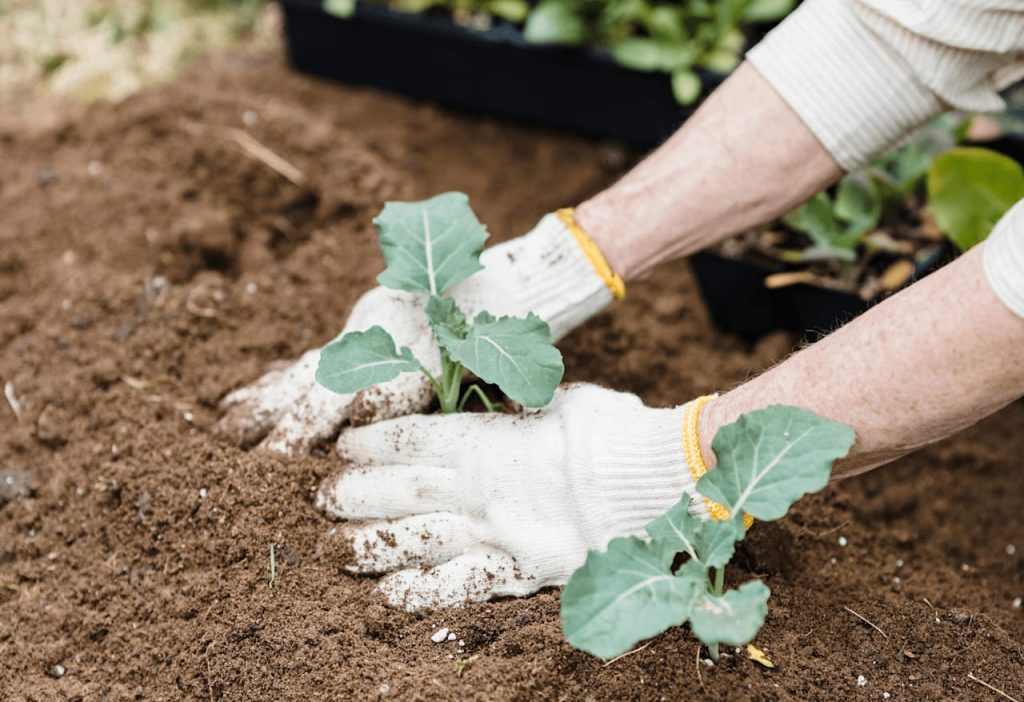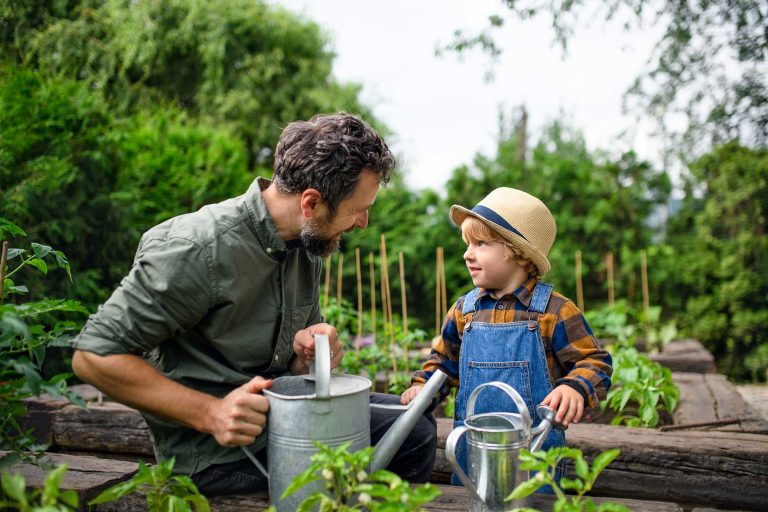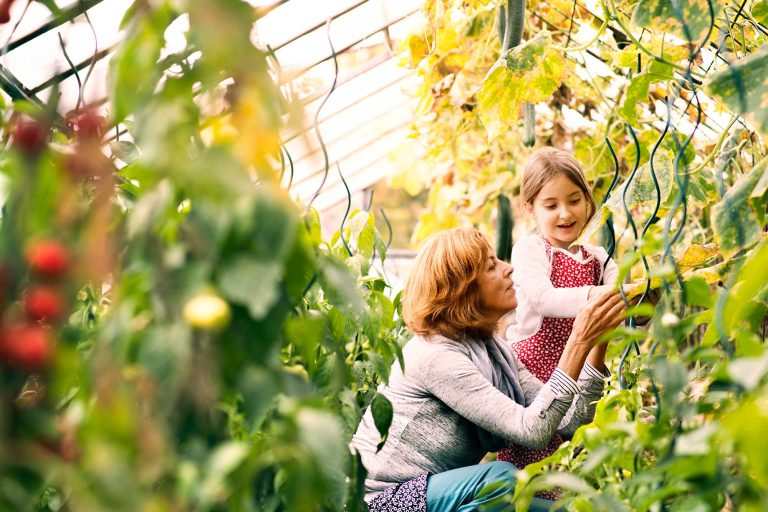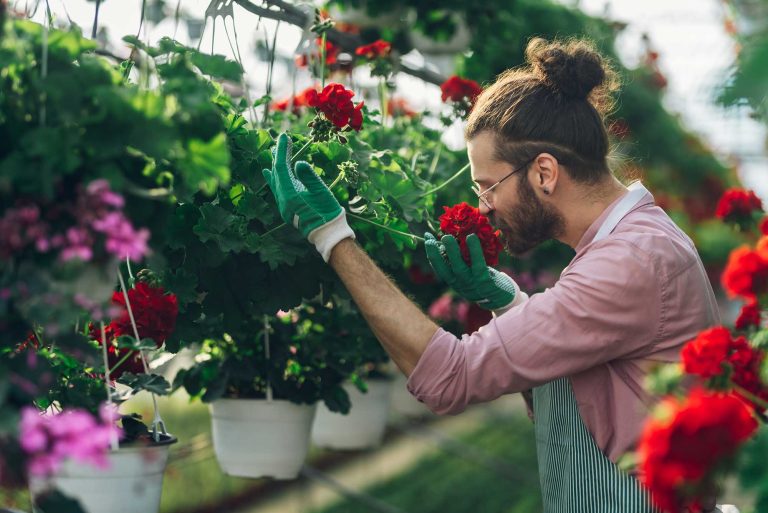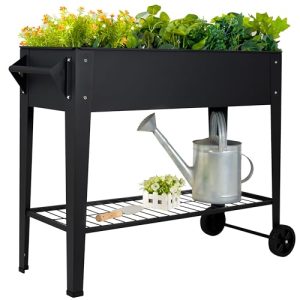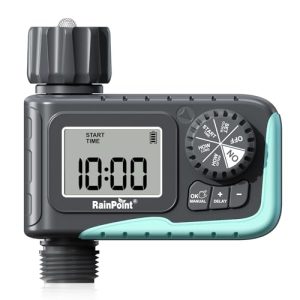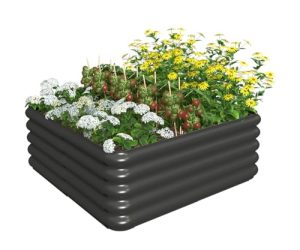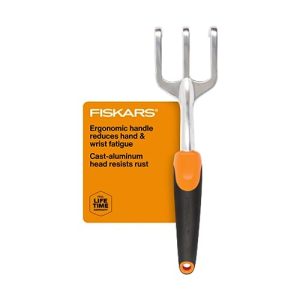Imagine stepping out into your backyard, greeted by a vibrant tapestry of blooming flowers, lush greenery, and the tantalizing aroma of fresh herbs. You feel a surge of satisfaction as you realize this beautiful oasis was crafted by your own hands.
But how do you know when it’s the right time to start planting your garden? Timing is everything when it comes to gardening, and getting it right can mean the difference between a thriving paradise and a patch of wilted dreams.
You’ll discover the perfect time to plant your garden, ensuring that your efforts result in a flourishing landscape. From understanding seasonal cues to recognizing the signs of soil readiness, we’ll guide you step-by-step to ensure your garden thrives. Whether you’re a novice or an experienced gardener, understanding these key principles will empower you to plant with confidence and success. Dive in to uncover the secrets to a thriving garden and transform your outdoor space into a sanctuary of beauty and tranquility.
Choosing The Right Season
Choosing the Right Season Plant gardens in spring or fall for ideal growth. Spring offers warmth; fall provides cooler temperatures. Both seasons ensure healthy plants.
Choosing the right season to plant your garden can make all the difference in the world. It can mean the difference between a bountiful harvest and a disappointing yield. Understanding the nuances of seasons and how they affect your garden is crucial. Knowing when to start planting is not just about following a calendar. It’s about interpreting environmental cues that nature provides. Are you ready to read these signs and make the most of your garden?Factors Influencing Planting Time
Several factors come into play when deciding the best time to plant your garden. Soil temperature is a critical one. Many seeds require a specific soil warmth to germinate successfully. Day length also affects plant growth. Longer days provide more sunlight, which many plants need to thrive. Consider the average frost dates in your area, as planting too early can expose young plants to frost damage.Climate Considerations
Your local climate is arguably the most significant factor in determining planting time. In areas with distinct seasons, spring is often the best time to plant. But what if you live in a region with a milder climate? In such places, you might have more flexibility. You could plant a winter garden with vegetables like kale or broccoli. Have you considered your microclimate? Sometimes, your garden’s specific location can differ from the general climate, affecting planting times. Understanding your climate can help you make informed decisions and ensure a thriving garden.Spring Planting Tips
Spring is a vibrant season for planting a garden. The soil warms up, inviting gardeners to sow seeds. With the right tips, you can grow a thriving garden.
Best Crops For Spring
Spring is ideal for planting certain crops. These crops thrive in mild weather. Consider planting the following:
- Lettuce:It grows quickly and enjoys cooler temperatures.
- Radishes:They are fast-growing and can be harvested in weeks.
- Peas:These love the cool spring air and soil.
- Spinach:It thrives in the coolness of spring.
- Carrots:They prefer the early spring soil conditions.
Preparing Your Soil
Healthy soil is key for a successful garden. Start by clearing debris from your garden area. Remove weeds, rocks, and old plants. This gives new plants space to grow.
Next, check the soil’s moisture. Soil should be moist but not soggy. Dry soil needs watering before planting. Wet soil should dry out a bit first.
Test your soil’s pH level. Most plants prefer a neutral pH. Use a soil test kit to check this. Adjust with lime for acidity or sulfur for alkalinity.
Consider adding compost to enrich the soil. Compost provides nutrients and improves soil structure. Spread a layer over the garden bed before planting.
Turn the soil with a spade or fork. This aerates the soil, allowing roots to grow easily. Ensure the soil is loose and crumbly.
Summer Planting Strategies
Summer planting offers unique challenges and opportunities for gardeners. The heat can be intense, but with the right strategies, your garden can thrive. Selecting the right plants and using smart watering techniques are key. Let’s explore how to make your summer garden flourish.
Heat-resistant Plants
Choose plants that love the heat. These plants thrive in high temperatures and direct sunlight. Consider these options:
- Tomatoes
- Peppers
- Eggplants
- Zinnias
- Marigolds
These plants not only survive but flourish in summer. They offer vibrant colors and delicious harvests. Ensure they get enough sunlight for optimal growth.
Watering Techniques
Proper watering is crucial during summer. Early morning is the best time to water. This minimizes evaporation and ensures roots absorb moisture. Consider using drip irrigation systems. They deliver water directly to the roots, reducing waste. Mulch can also help retain soil moisture. A layer of mulch keeps roots cool and reduces evaporation.
Monitor soil moisture regularly. Stick your finger into the soil. If it feels dry, it’s time to water. Avoid overhead watering in the afternoon. It can lead to water loss due to evaporation.

Credit: www.tiktok.com
Autumn Gardening Guide
Autumn is a great time to start a garden. The season offers unique opportunities for planting. The weather is cooler, and the soil is still warm. This makes it ideal for certain crops. Let’s explore the benefits and methods of autumn gardening.
Crops For Cooler Weather
Some crops thrive in cooler temperatures. These include spinach, kale, and carrots. They grow well in the crisp air of fall. These vegetables are hardy. They can withstand light frosts. You can enjoy fresh produce even as the days grow shorter.
Plant leafy greens like lettuce and Swiss chard. They do well in autumn’s mild climate. Radishes and beets also make good choices. They are quick to mature. This means you can harvest them before winter sets in.
Extending The Growing Season
Use row covers to keep plants warm. They trap heat and protect from frost. Another option is cold frames. These act like mini greenhouses. They allow you to grow longer into the season.
Consider planting in raised beds. They drain better and warm up quicker. This extends your gardening period. Mulching is also helpful. It insulates the soil and retains moisture.
Choose the right crops, use smart techniques. You can enjoy your garden throughout autumn. Happy planting!
Winter Planting Possibilities
Winter planting opens up new opportunities for your garden. Choose hardy vegetables and frost-tolerant plants. Timing is key to ensure healthy growth.
Winter doesn’t have to mean the end of your gardening adventures. While many plants do go dormant, there are plenty of winter planting possibilities to keep your green thumb active. Embracing the colder months allows you to explore unique gardening techniques and enjoy fresh produce all year round.Indoor Gardening Options
Winter can be a perfect time to experiment with indoor gardening. Setting up a small herb garden on your kitchen windowsill can bring fresh flavors to your winter dishes. Choose herbs like basil, mint, and parsley, which thrive indoors with minimal sunlight. Consider using grow lights if natural light is scarce. These lights help mimic sunlight, supporting plant growth even in the darkest months. Indoor gardening not only keeps your plants alive but also brightens up your home.Using Greenhouses
Greenhouses offer a fantastic way to extend your growing season into winter. They create a controlled environment, protecting plants from frost and harsh weather. If you’ve ever dreamed of picking fresh tomatoes in January, a greenhouse could be your solution. Look into different types of greenhouses, like portable or permanent structures, depending on your space and budget. Even a small, simple setup can significantly increase your winter planting success. Ask yourself, how can a greenhouse change your gardening routine? Investing time and resources into a greenhouse might just transform your winter gardening experience.Regional Planting Differences
Planting a garden depends greatly on your region. Different areas have unique climates and soil conditions. Knowing your regional differences helps in choosing the right time to plant. Timing affects how well your plants grow and thrive.
Understanding Hardiness Zones
Hardiness zones guide gardeners in selecting plants that can survive winter. The USDA Plant Hardiness Zone Map divides regions by average cold temperature. Identify your zone to understand which plants will endure the cold months. This knowledge helps in planning your planting schedule.
Local Weather Patterns
Local weather patterns also influence planting times. Some regions experience late frost, while others warm up early. Observe your local weather to decide the best planting time. Keep an eye on temperature changes and rainfall patterns. This ensures your garden gets the best start.
Tools And Resources
Discover the best tools and resources to determine the perfect time for planting your garden. Use local climate guides and planting calendars to plan effectively. Online gardening forums and apps can offer personalized advice, ensuring your garden thrives in its optimal season.
Planting a garden is a rewarding endeavor that requires a bit of planning and the right tools. As you embark on your gardening journey, equipping yourself with the right resources can make all the difference. From knowing the perfect planting time to accessing expert advice at your fingertips, there are several tools and resources available to guide you.Gardening Calendars
Gardening calendars are invaluable for determining the best times to plant various vegetables and flowers. These calendars often take into account your specific climate and region, offering tailored advice for planting. Many gardening supply stores offer printed versions, while digital options can be found online, allowing you to customize your planting schedule.Online Guides And Apps
Today’s technology provides a plethora of online guides and apps designed to assist you in your gardening efforts. Websites dedicated to gardening often feature detailed articles, step-by-step guides, and community forums where you can ask questions and share experiences. Gardening apps can be a game-changer, offering features like reminders for watering and fertilizing, plant identification, and virtual garden planners. Have you ever thought about how much easier it is to plan your garden when you have all this information in your pocket? Investing time in learning and utilizing these tools can significantly enhance your gardening experience. Imagine the satisfaction of seeing your garden thrive with a little help from these resources. So, which tool will you try first?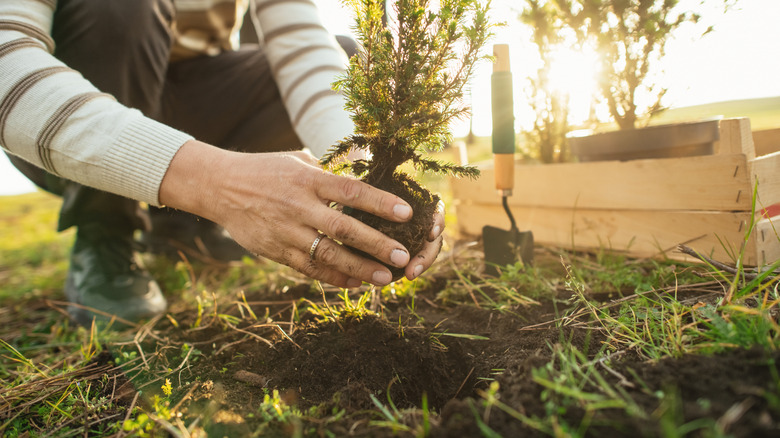
Credit: www.housedigest.com
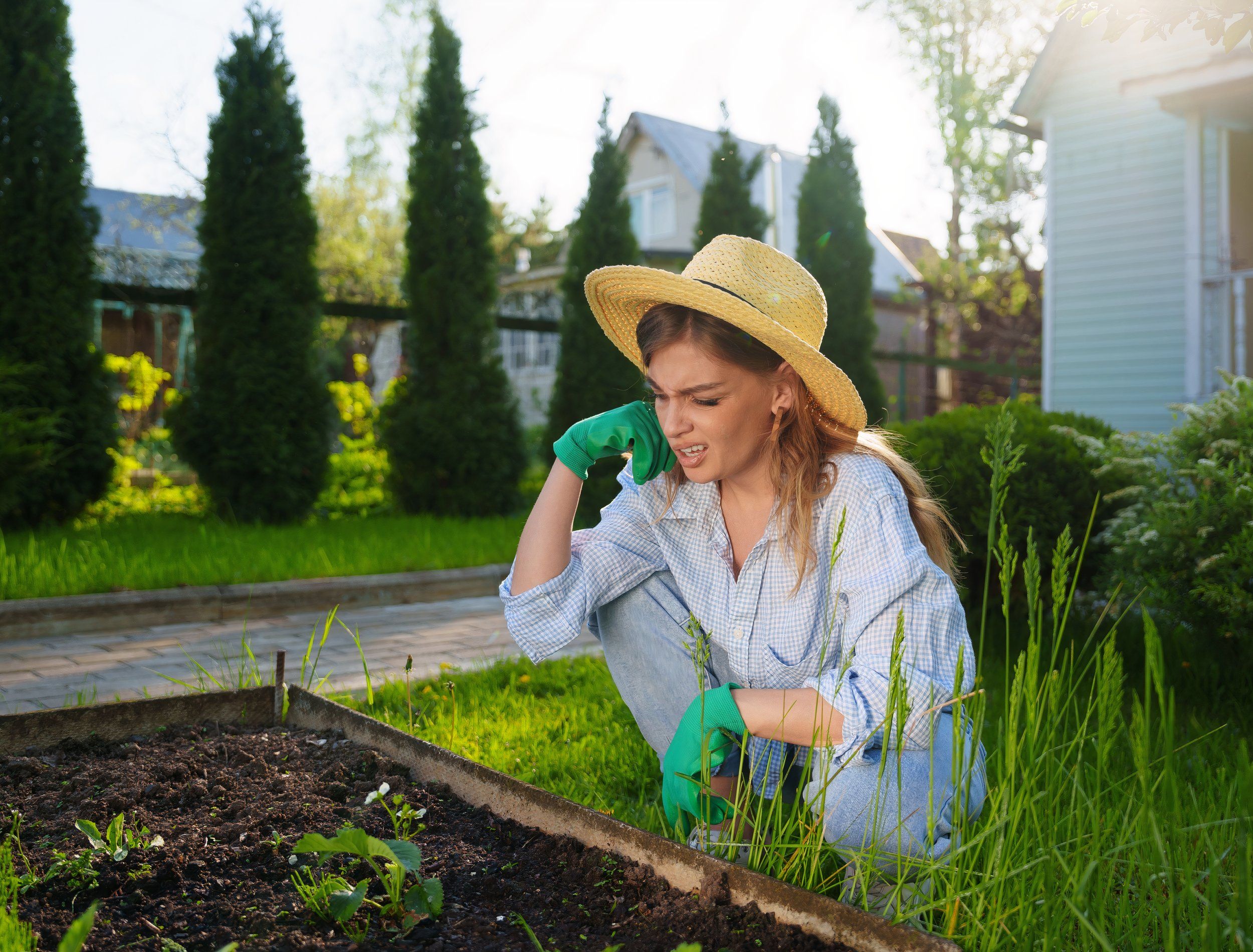
Credit: www.backyardboss.net
Frequently Asked Questions
When Is The Best Time To Plant A Garden?
The ideal time to plant a garden depends on your region and climate. Generally, spring and fall are perfect for most areas. In spring, the soil is warming up, promoting germination and growth. In fall, cooler temperatures reduce stress on plants, and soil moisture helps roots establish.
Can I Plant A Garden In Winter?
Winter gardening is possible with hardy plants and the right conditions. Focus on frost-tolerant vegetables like kale, spinach, and carrots. Using cold frames or greenhouses can extend your growing season. Planning and protecting plants from harsh weather is essential for success during winter months.
How Do I Know My Gardening Zone?
Gardening zones are determined by your area’s climate and average low temperatures. Use the USDA Hardiness Zone Map to find your zone. Knowing your zone helps in selecting plants suited to your region. This ensures better growth and reduces the risk of plants not surviving seasonal changes.
What Are The Signs Of Good Planting Conditions?
Good planting conditions include warm soil, consistent moisture, and favorable weather. The soil should be workable and crumble easily. Avoid planting in waterlogged or compacted soil. Check local weather forecasts to ensure no frost risk. Proper conditions promote healthy plant growth and successful gardens.
Conclusion
Planting a garden brings joy and fulfillment. Timing is key. Choose the right season for your plants. Spring is perfect for most vegetables. Summer suits heat-loving crops. Fall works for root veggies. Understand your region’s climate. It affects planting success.
Prepare soil well before planting. Healthy soil means healthy plants. Start small if you’re new. Learn and grow with each season. Gardening is a journey, not a race. Enjoy the process. Watch your garden thrive with care. Nature rewards patience and effort.
Happy planting!
